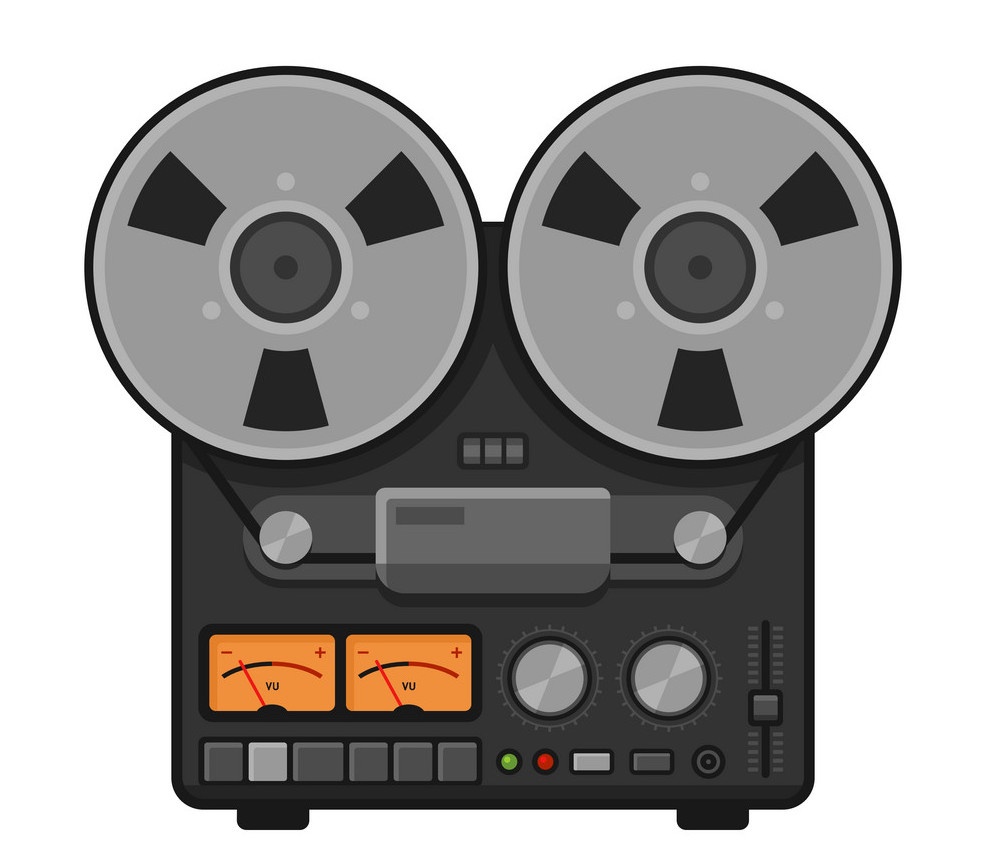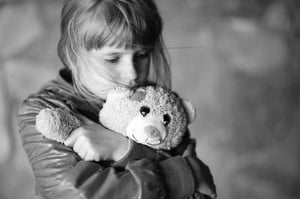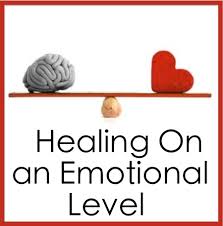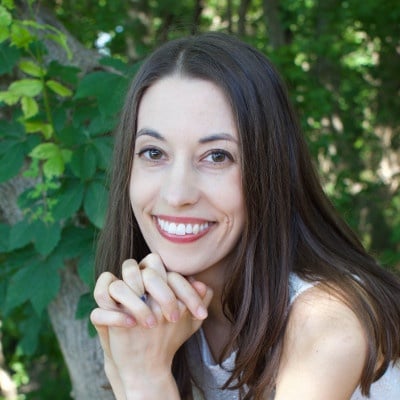
If you’ve been carrying around a lot limiting beliefs since childhood, does that mean that you’re doomed to stay stuck?
What are limiting beliefs anyway, and where do they come from?
While it’s true that many people with childhood trauma stay stuck in dysfunction - and that there is a link between trauma and addiction - many others are able to heal fully and lead amazing lives. Often the people who have endured the greatest struggles are also the ones who have the greatest triumphs.
“My childhood is a part of my story, and it’s why I am who I am today and why my career is what it is."
- - Accomplished Ballet Dancer Misty Copeland
Misty Copeland is a renowned ballet dancer for the American Ballet Theatre who endured trauma, loss, and neglect in her early life.
That’s the voice of a strong woman who has owned, accepted, and transcended the difficult events of her life, ultimately using them to fuel her tremendous success.
Another example of strength against harsh odds is Pulitzer Prize-winning writer and columnist Charles Krauthammer. He became paralyzed in his 20s, during medical school. He went on to graduate with his class and become a psychiatrist and a respected, influential writer before passing away after a long battle with cancer.
As you identify, rewrite, and forgive your limiting beliefs, you too can grow in strength and courage.
Keep reading and learn about …
- The origins of your limiting beliefs
- How to identify the limiting beliefs that hold you back
- The role of childhood trauma in creating limiting beliefs
- The original positive purpose of your limiting beliefs
- How to work with limiting beliefs on both mental and emotional levels
When we know where our limiting beliefs come from, we’ll gain new insight as to how to heal them and how to let them go.
What Are Limiting Beliefs?
Limiting beliefs are any thoughts or ideas that constrain us in some way.
They often feel really heavy, and they bring us down. Limiting beliefs are generalizations that we've created about the way the world works. Often, it's hard to identify them or see past them, because they tend to operate in our subconscious minds.
Examples of limiting beliefs include but are not limited to:
- I can’t tell the truth because I may get judged
- I don’t want to get close to this person because I may be heartbroken
- I don’t want to ask for what I want because I might get rejected
- I can’t trust people because I’ve been burned before
- I can’t pursue my dreams because I might fail
- I can’t do X because of Y
- I can’t do A because of B
Where Do Limiting Beliefs Come From?
Childhood is a time where we can subconsciously download a lot of limiting beliefs.
When we're in childhood, we're operating in a subconscious state more often, so a lot of our limiting beliefs take root in our lives.
When we're children, we have a really incomplete understanding of the way the world works, because our brains are not fully formed yet. We're still growing. We're still developing.
The author of the bestselling book The Biology of Belief, Dr. Bruce Lipton, talks about how from birth to around age seven, we operate primarily in brain wavelengths that are very, very close to a hypnotic state.
When we're operating like this, we're just recording. We're like video recorders. We see what the adults in our lives are doing, and we just download that.

We take all of that in, and we internalize it, because we don't have the cognitive mechanisms that discern, "All right, this is real and this is the nature of reality, and this is not." We're just recording all of it. We're taking all of it in; we're sponges, soaking it up.
Again, we don't have that high level of discernment built into our brains yet.
We're little. We're young.
Childhood is a time where we can subconsciously download a lot of limiting beliefs.
So, for example, if your parents were always saying things such as, "There's never enough money to go around" or "We're always going to struggle," then that gets ingrained in your subconscious thinking.
If your parents communicate beliefs such as, "There's danger around every corner, and you can't trust people outside of the family” … that's really powerful.
Yet many times it's not so much what people say, but the messages that we take from their behaviors.
For example, if your parents were hitting each other and you tried to tell a teacher about it and the message you got was, "That's not what we do. We don't do that," … then, even if you didn't hear that verbally, you internalized, "Oh, I'm not supposed to trust anyone outside of the family system. I'm not supposed to tell the truth to people on the outside."
Then you might carry that belief with you through so many other situations in life, where it would actually serve you better to speak up and to tell.
But you don't, because the child inside of you has made a rule.
How to Identify Limiting Beliefs from Childhood
Limiting belief often come with words such as "always" and "never."
For example, "I should never tell someone else what's actually going on with me" or "I should always be quiet," those are very limiting beliefs.
As an adult, as you can see that they are not accurate in every situation.
Sometimes it is safe to be quiet, but sometimes it's safer to speak up.
We really want to examine these beliefs for what they are, and take them apart.
The Limiting Stories We Create Around Traumatic Events
Here’s a quote from someone who's done a lot of work on her own limiting beliefs.
"Kids have a limited understanding of the world to begin with, and so when you get dealt the facts of your trauma, you don't understand them. So you build a story around them. But sometimes, the story that you build around them is at least as harmful as the trauma."
- - Laura Parrott Perry, author
Laura Parrott Perry is an author, a speaker, a woman in recovery from alcohol abuse, and she's also a sexual abuse survivor.
She talks about the limiting beliefs that we internalize as children.
Now, I don't want to frame this as, "Oh, it's all our parents' fault" or "Oh, it's all our caregivers' fault."
No.
A lot of these limiting beliefs are ones that we create within ourselves, and with good reason.

When something inexplicable happens to you as a child - maybe you endure emotional abuse or neglect - something happens that really shakes you up and rocks your world.
The psychological definition of trauma is anything that is shocking to you personally. It's totally subjective.
So you undergo this trauma; something happens, and you cannot make sense of it.
You just don't have a framework for it. Then what you do is you try to find meaning. You write a story, which, for example, could be, "I should never trust anyone" or "I should never tell anyone the truth of what I'm thinking and feeling. It's not safe."
The Original Positive Purpose of Limiting Beliefs
The important thing to understand here is that your limiting belief story, at the time that you wrote it, might have served you very well. That story might have protected you.
That limiting belief story legitimately was probably the best that you could do at the time with what you understood, with the resources that you had. That story served a purpose.
Limiting beliefs exist for a reason, and they serve a purpose. Having limiting beliefs does not mean that you're crazy or that you will never recover or that you'll never heal.
Instead, it means that you had pain in your life. It means that your parents or caregivers had pain in their lives. Limiting beliefs arose from that place of pain. They arose for a purpose.
That's really helpful to remember when it comes to rewriting them, because you can acknowledge those old beliefs for the role that they played.
You can say to yourself, "I get that you existed for a reason, but that reason isn't valid anymore, and I'm going to let you go. I'm going to rewrite you. I'm going to choose another belief.”
Now that we're adults, we have the capacity to choose the thoughts that we think, to choose the beliefs that we adapt. We're not in that default video recording mood that we were in as children.
How Do I Rewrite My Limiting Beliefs?
It is possible to rewrite limiting beliefs.
Say you've identified a limiting belief: "I should never tell anyone what I'm really thinking." Here's how we work with it.
Get Centered
First, you get centered.
- Go to a place of love and peace and compassion within yourself.
- Take some deep breaths, calm your physical body, and then turn your mind and heart to someone or something for whom it's easy for you to feel love.
You might think of a pet. You might think of a child.
Pick someone or something for whom there's just this natural outflowing of love.
When you're in that state, then you start to work with your limiting belief: "I should never tell anyone the truth of what I'm thinking."
With that love in your heart, you forgive yourself for holding that belief.
You say, "I forgive myself for accepting the limiting belief that I should never trust anyone or tell anyone what I'm really thinking. The truth going forward for me is .... " .
Then you fill in that blank with what that voice of unconditional love inside of you would say.
There is no right or wrong answer. There is only tapping into that place of love and compassion inside of yourself.
Everybody's answer is going to be a little bit different.
One example might be, "I forgive myself for accepting the limiting belief that I should never speak my truth. The truth going forward for me is that I trust myself to say what's real."
Or it could be, "I am fully loved, and it's safe for me to speak up."
Play with it and work with what feels right for you. It's all about connecting with that place of self-compassion.
For more detail, check out What Are Limiting Beliefs?
Forgiving Limiting Beliefs on the Emotional Level

Another key point is that this work engages you on the emotional level.
Emotional level is what we feel. The mental level - our conscious and subconscious - is what we think.
Often when people talk about letting go of limiting beliefs, there's an assumption that it's only mental-level thought work.
That is really important, and we certainly emphasize the mental-level work in our program.
However, we also emphasize the emotional-level work, because if you don't operate on this emotional level and offer yourself that forgiveness and that compassion, then that part of you stays stuck.
There's a part of you that resents yourself for holding that limiting belief, and you get into this tug-of-war with yourself. But when you're offering that compassion and that forgiveness, it breaks away.
Suddenly, there's more expansiveness. There's more peace.
It's really important to work with those limiting beliefs on the emotional level and not just the mental level. We need to not just rewrite them, but to forgive ourselves for having adopted them in the first place.
Remember -
The truth going forward for me is that I was doing the best that I could.
Back then, when you adopted that limiting belief or your parents adopted it, you were doing the best that you could. Now that you know better, you can make different choices.
Limiting Beliefs and Recovering From Adverse Childhood Experiences
[Our Facebook fan] Susan added a comment to our video on limiting beliefs. She said, "I need to hear this. So, so hard to recover from childhood abuse."
We published a post series about how adverse childhood experiences, such as abuse and neglect and trauma, shape the rest of our lives.
Explore the Adverse Childhood Experience post series:
It’s Not the Drugs: Are Adverse Childhood Experiences Holding You Back? (Video)
Do You Have Adverse Childhood Experiences? Take the Quiz
Adverse Childhood Experiences FAQs
On one hand, it can be really hard to look at those events for what they were and say, “That was a terrible thing that happened to me. I was young, and I didn't understand it. I put up all these limiting beliefs like walls to try and keep myself safe."
Yet there's also this beautiful freedom that comes when you can look at that and think, "Wow. Not only did I survive, but the part of me that created that limiting belief was doing so because it wanted to protect me. It was trying to do something to help me. Its original purpose was positive," … even if it might not be serving you now.
That limiting belief came into being in order to try and protect you. It can be very freeing to realize: "Oh, the part of me that I resented for holding me back, it had a positive purpose. It wasn't random, and it wasn't trying to bring me down. It was trying to keep me safe."
A lot of this work is about trusting that you - the adult you - will take care of yourself and keep yourself safe.
You don't need those limiting beliefs anymore; they've outlived their purpose.
Now you trust yourself in a new way to be able to take care of yourself.
Limiting Beliefs and Addiction
For additional reading on how limiting beliefs can keep those struggling with addiction stuck, download our free eBook, Healing Underlying Core Issues.



